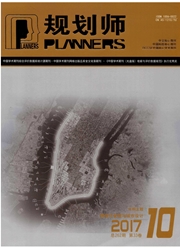

 中文摘要:
中文摘要:
Given the differences between cities in the United States and China,and the changing structure of Chinese cities,this paper examines the viability of some basic predictions of the Muth-Mills model of urban spatial structure for modern cities in China,using data for the year 2010. Chinese cities are experiencing rapid motorization and road construction over the last two decades,so we have tried to use different measurements for commuting cost in these cities to estimate the empirical model,and concluded that most results support the Muth-Mills assertion. The elasticities of the urban spatial size with respect to the signifi cant variables are discussed,comparing to those for cities in the United States. The results we obtain from both theoretical and empirical analyses can further increase our understanding on the model as a tool for a policy analysis on cities in China.
 同期刊论文项目
同期刊论文项目
 同项目期刊论文
同项目期刊论文
 Evaluation index system on relationship between urban mass rail transit and its surrounding land use
Evaluation index system on relationship between urban mass rail transit and its surrounding land use 期刊信息
期刊信息
